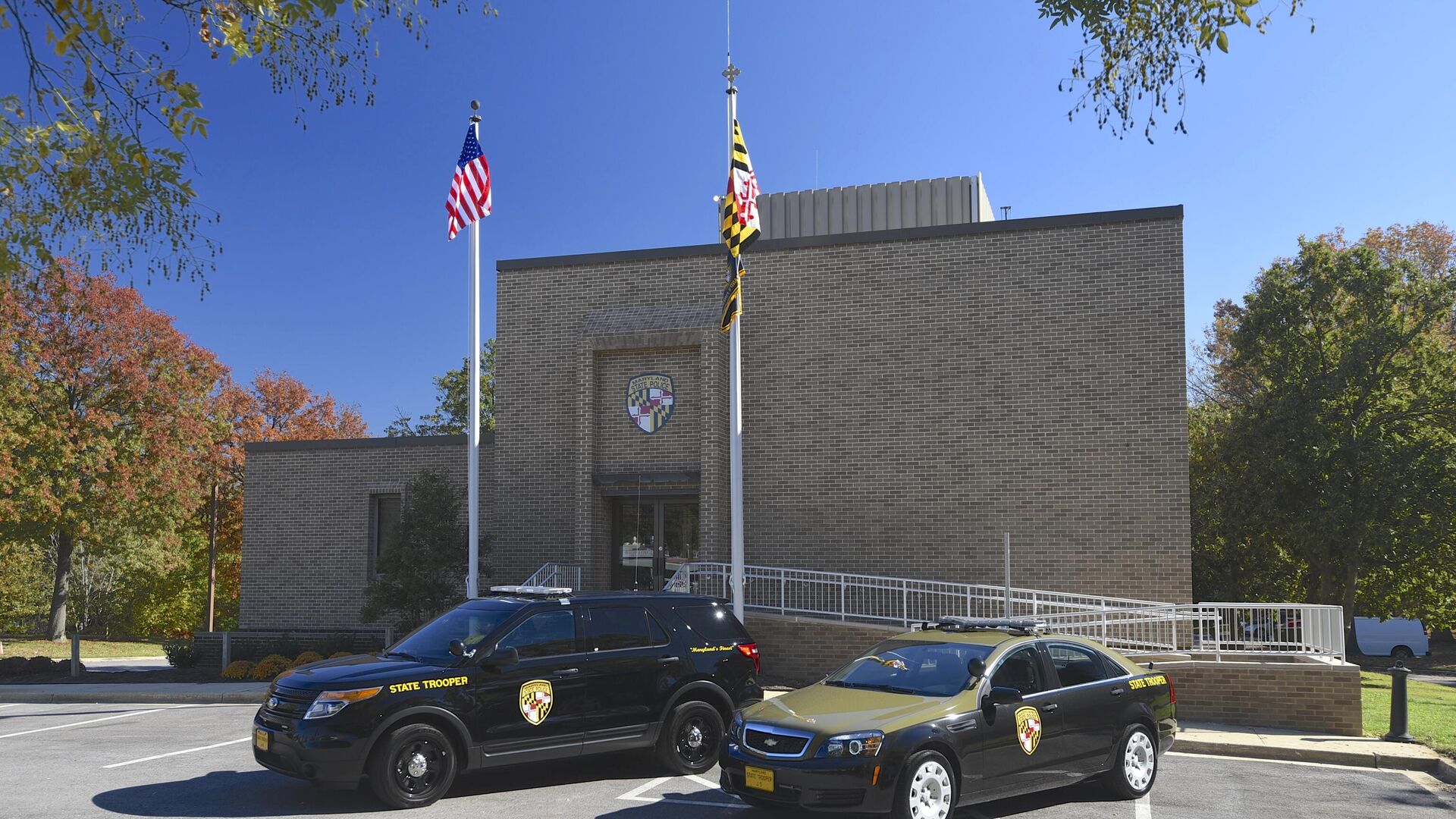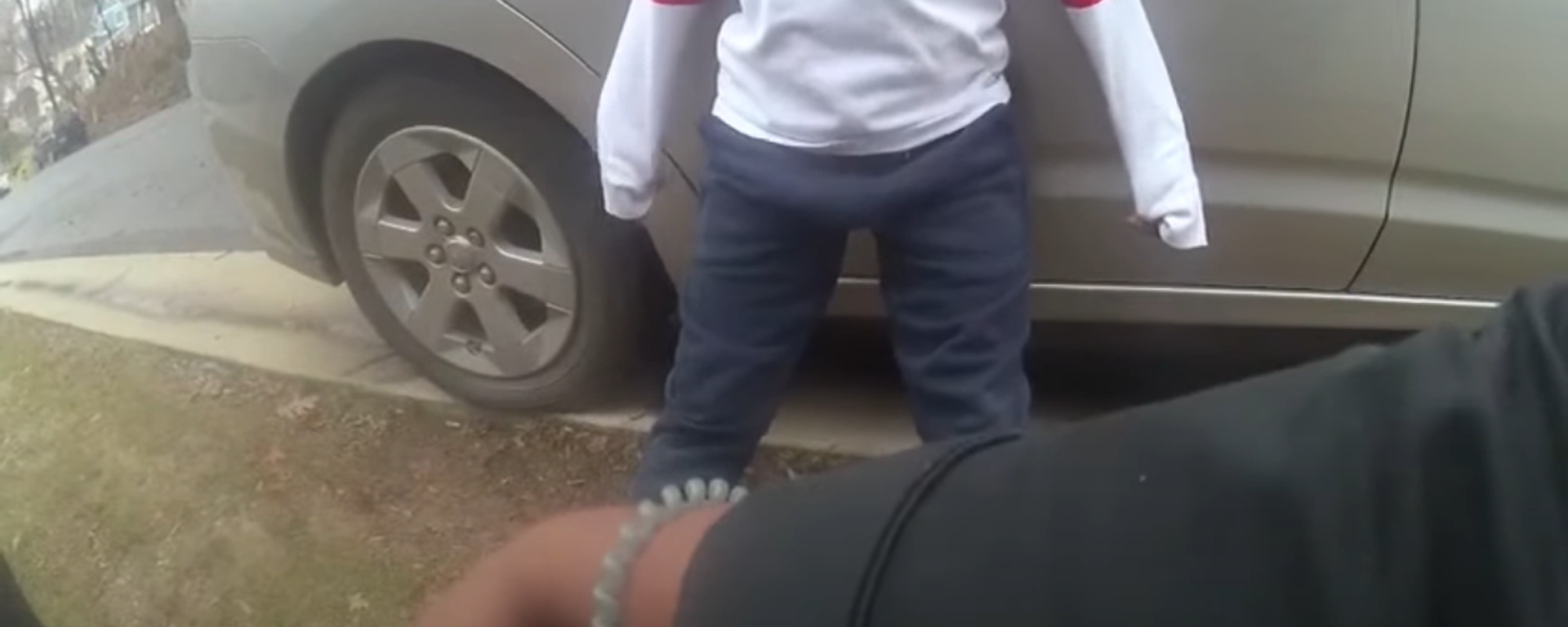https://sputnikglobe.com/20230209/leaked-docs-reveal-maryland-state-troopers-have-arrest-quotas-in-defiance-of-2006-law-1107098478.html
Leaked Docs Reveal Maryland State Troopers Have Arrest Quotas in Defiance of 2006 Law
Leaked Docs Reveal Maryland State Troopers Have Arrest Quotas in Defiance of 2006 Law
Sputnik International
According to a 2021 anti-corruption report by the University of Illinois at Chicago, Baltimore, Maryland’s largest city, has been the second-most corrupt... 09.02.2023, Sputnik International
2023-02-09T01:11+0000
2023-02-09T01:11+0000
2025-11-24T13:35+0000
americas
maryland
state police
arrest quota
corruption
https://cdn1.img.sputnikglobe.com/img/07e7/02/09/1107098261_0:0:3073:1728_1920x0_80_0_0_e2a2db2c50f150f6a0dc42b58d1f7658.jpg
Newly leaked internal documents have revealed Maryland state police officials were involved in a points-based system scheme that rewarded its patrol officers for increased arrests, a practice banned since 2006.The documents, reviewed by local news outlet The Baltimore Banner, include a “goals and expectations” memo that details what is expected of troopers, including how many arrests, stops, and citations should be made in a month.The documents come from a judiciary committee hearing in the General Assembly on Tuesday.Delegate Robin Grammer, a Republican from Essex county, said the docs were sent to him anonymously. The tipster wrote they felt “most troopers disagree with this but have no voice to help combat this practice.”One of the documents appears to be an email sent to state police supervisors and implies that troopers can be rewarded for exceeding quotas, or punished for failing to reach them.The document then lists thirteen troopers with their names redacted next to an apparent point total ranging from 471 to 2,259.To meet expectations, troopers in Maryland are expected to make 70 to 90 traffic stops per month, issue 35 to 50 citations a month, issue 35 to 50 warnings a month, keep their citation-to-warning ratio above 0.7, perform 4 to 6 DUI arrests a year, issue 3 to 5 safety equipment repair orders for things like broken tail lights a month, make 3 to 5 controlled substance arrests or civil citations a month, and make between 2 and 3 arrests a month.Those statistics will put a trooper in the “Meets Expectations” range, but they can also increase those numbers and be included in the “Exceeds Expectations” category. Failing to hit those statistics will result in an officer's performance being ranked “Needs Improvement” or “Unsatisfactory.”Grammer, who has introduced legislation to strengthen the state’s current ban on law enforcement quotas, said the program amounts to “taxpayer-paid incentives for juicing up the numbers so that local politicians look good.”Grammer says the issue could have been avoided, but the 2006 legislation that banned the practice was gutted by the state lawmakers who opposed it.When asked to comment, the Maryland State Police seemed unaware of the documents. State police spokesperson Ron Snyder told the Baltimore Banner that the agency was looking into it and would “follow up as soon as possible.”
https://sputnikglobe.com/20210328/body-camera-footage-released-by-maryland-police-shows-officers-berating-5-year-old-boy-1082475986.html
americas
maryland
Sputnik International
feedback@sputniknews.com
+74956456601
MIA „Rossiya Segodnya“
2023
News
en_EN
Sputnik International
feedback@sputniknews.com
+74956456601
MIA „Rossiya Segodnya“
Sputnik International
feedback@sputniknews.com
+74956456601
MIA „Rossiya Segodnya“
maryland, state police, arrest quota, corruption
maryland, state police, arrest quota, corruption
Leaked Docs Reveal Maryland State Troopers Have Arrest Quotas in Defiance of 2006 Law
01:11 GMT 09.02.2023 (Updated: 13:35 GMT 24.11.2025) According to a 2021 anti-corruption report by the University of Illinois at Chicago, Baltimore, Maryland’s largest city, has been the second-most corrupt jurisdiction in the country over the past decade.
Newly leaked internal documents have revealed Maryland state police officials were involved in a points-based system scheme that rewarded its patrol officers for increased arrests, a practice banned since 2006.
The documents, reviewed by local news outlet
The Baltimore Banner, include a “goals and expectations” memo that details what is expected of troopers, including how many arrests, stops, and citations should be made in a month.
The documents come from a judiciary committee hearing in the General Assembly on Tuesday.
Delegate Robin Grammer, a Republican from Essex county, said the docs were sent to him anonymously. The tipster wrote they felt “most troopers disagree with this but have no voice to help combat this practice.”
One of the documents appears to be an email sent to state police supervisors and implies that troopers can be rewarded for exceeding quotas, or punished for failing to reach them.
“I just pulled the last 6 months of stats to help determine who is getting a new car. I added the information below for your reference to help you identify any Troopers who are falling behind. The average point total was 1089. If you have a Trooper who is significantly below that, it is an indication that there may need to be additional coaching or corrective action taken.”
The document then lists thirteen troopers with their names redacted next to an apparent point total ranging from 471 to 2,259.
To meet expectations, troopers in Maryland are expected to make 70 to 90 traffic stops per month, issue 35 to 50 citations a month, issue 35 to 50 warnings a month, keep their citation-to-warning ratio above 0.7, perform 4 to 6 DUI arrests a year, issue 3 to 5 safety equipment repair orders for things like broken tail lights a month, make 3 to 5 controlled substance arrests or civil citations a month, and make between 2 and 3 arrests a month.
Those statistics will put a trooper in the “Meets Expectations” range, but they can also increase those numbers and be included in the “Exceeds Expectations” category. Failing to hit those statistics will result in an officer's performance being ranked “Needs Improvement” or “Unsatisfactory.”
Grammer, who has introduced legislation to strengthen the state’s current ban on law enforcement quotas, said the program amounts to “taxpayer-paid incentives for juicing up the numbers so that local politicians look good.”
A democratic delegate from Baltimore City, Caylin Young says the practice “gamified public safety in a way where the incentive is not actual safety, the incentive is the material benefit.”
Grammer says the issue could have been avoided, but the 2006 legislation that banned the practice was gutted by the state lawmakers who opposed it.
“The bill was amended and chopped to hell so that it was basically meaningless, and in 2023, we still have quotas,” he said.
When asked to comment, the Maryland State Police seemed unaware of the documents. State police spokesperson Ron Snyder told the Baltimore Banner that the agency was looking into it and would “follow up as soon as possible.”



